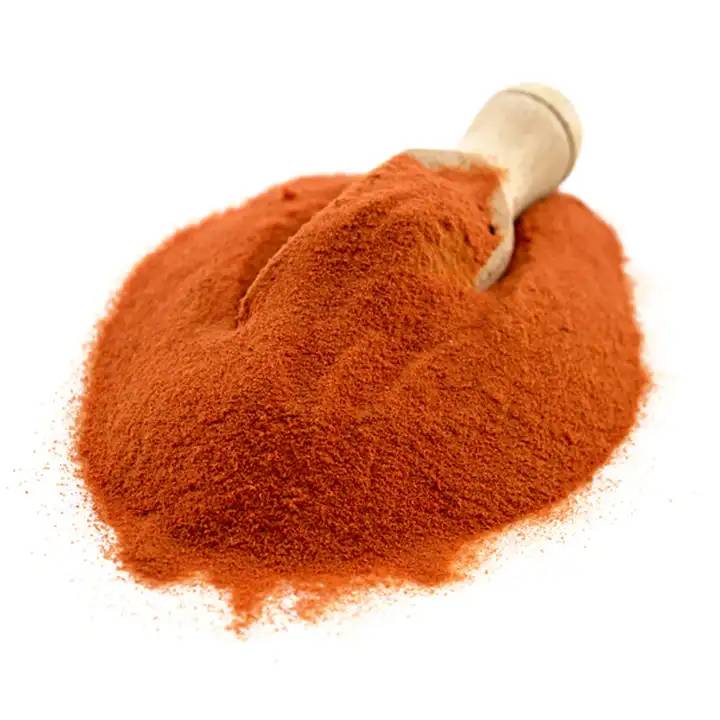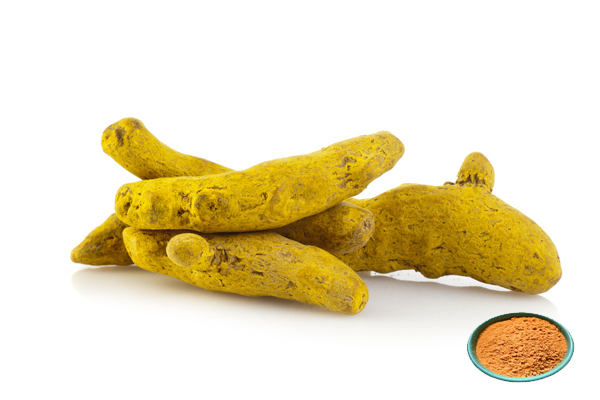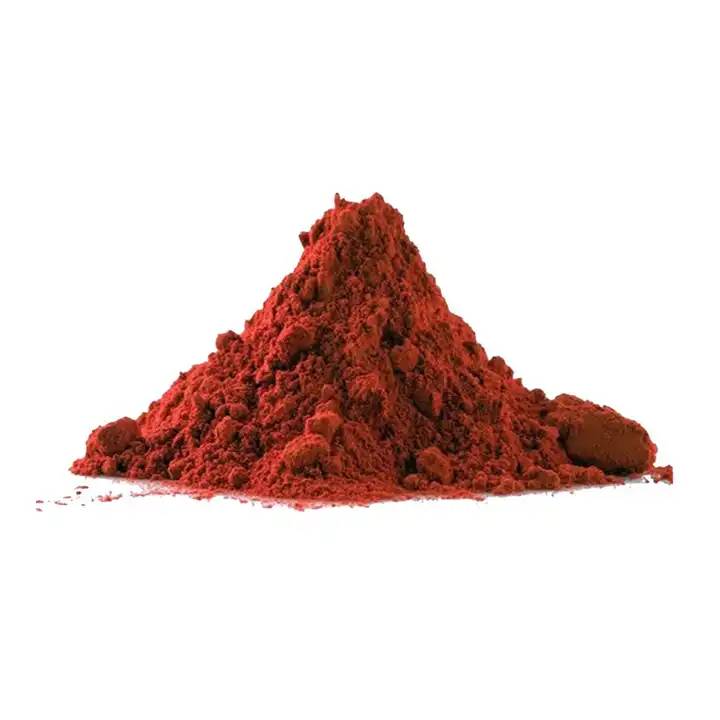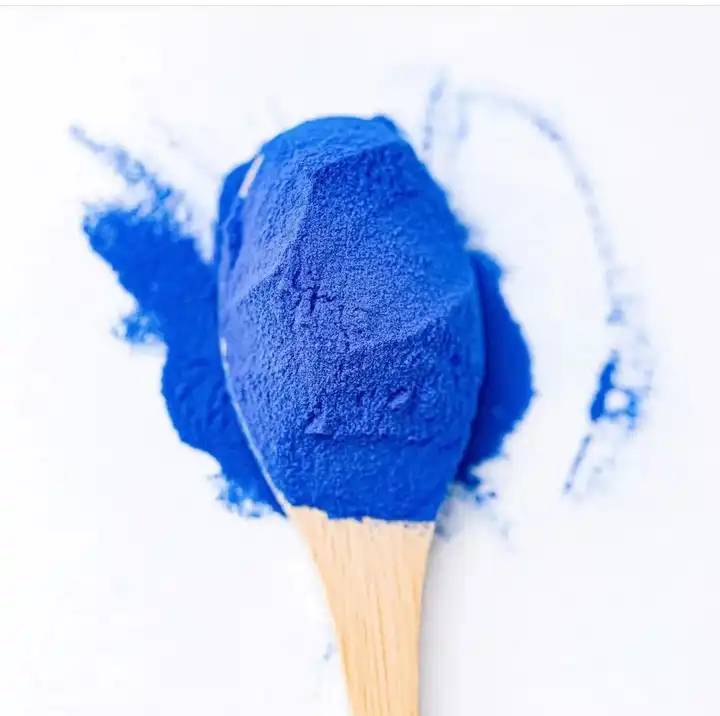3% d’astaxanthine naturelle en poudre en vrac
Nom de produit :3% Natural Astaxanthin Powder Bulk
Analyse :3%
Source:Haematococcus Pluvialis
Méthode d’essai :HPLC
Apparence: poudre rouge ou rouge foncé
Résidu de Pesticide: conforme à la norme (ce) No 396/2005
- Description Description
- Fiche technique
- Certificat de formation
-
Qu’est-ce que 3% % astaxanthine en poudre?
L’astaxanthine est un pigment rouge naturel et l’ingrédient principal d’haematococcus Pluvialis............. C’est un caroténoïde aux puissantes propriétés antioxydantes. L’astaxanthine agit dans la nature pour protéger les algues contre les rayons UV et les dommages oxydatifs. La poudre d’astaxanthine est une poudre rouge ou rouge foncé avec une bonne fluidité et une odeur légèrement poisson d’algues, qui est faite à partir d’algues rouges, microencapsulé, et séché par pulvérisation. Il est principalement utilisé dans les compléments alimentaires, les produits nutritionnels, les nutraceutiques et les boissons.
Haematococcus Pluvialis (high astaxanthin content, pure natural), is recognized as the algae with the highest natural astaxanthin content of 15,000 to 60,000 ppm and is currently the main algae producing astaxanthin. The structure of astaxanthin it contains is mostly of the levulose type, with superb biological activity, making it the best biological source of natural astaxanthin powder.
Green Spring Technology supplies 3% natural Astaxanthin Powder bulk, which is sourced from extracted from Haematococcus Pluvialis. It is red or dark red uniform powder, A la bonne solubilité, peut être rapidement dispersé dans l’eau froide, et la solution est rouge ou rouge vif. Structure 100% levuline, très facile à absorber et à utiliser, activité antioxydante et biodisponibilité élevée.
Green Spring Technology organise la production selon les normes ISO, HACCP et autres normes de qualité. Nous avons un processus de contrôle de qualité interne rigoureux pour nous assurer que les normes de qualité sont respectées. Chaque étape du processus de production est contrôlée et testée pour s’assurer que le processus de production est conforme et répond aux exigences des pays concernés. Des tests de produits finis sont effectués sur chaque produit pour s’assurer qu’il répond aux normes élevées de l’union européenne, des États-Unis, de l’asie du sud-est et d’autres marchés.
Spécification:
Nom du produit
3% d’astaxanthine naturelle en poudre en vrac
CAS non.
472-61-7 (en anglais)
Source:
Haematococcus Pluvialis
analyse
3%
Méthode d’essai
HPLC/HPLC
apparence
Poudre rouge ou rouge foncé
Résidus de pesticides
Conforme à la norme (ce) n ° 396/2005
Règlement:
Il est conforme à la réglementation de l’ue.
Learn More About Our Ultimate Solution for Natural Astaxanthin Ingredient.
Vous cherchez un devis?Benefits:
Protection Against UV Radiation
The strong antioxidant activity of astaxanthin can be used as a potential photoprotectant for stopping photoaging of the skin. Astaxanthin can effectively scavenge free radicals that cause skin aging due to computer radiation, environmental pollution, and smoking, and slow down skin aging. It protects cell membranes and mitochondrial membranes from oxidative damage, thus preventing cells from being harmed by oxidative reactions.
Anti-Inflammatory
Based on its powerful antioxidant effects, astaxanthin has significant activity in both enhancing the body's immunity and fighting chronic inflammation. Astaxanthin inhibits several inflammatory factors, including tumor necrosis factor-alpha (TNF-alpha, prostaglandin E-2 (PGE-2), interleukin-1β (1L-1β), and nitric oxide (NO). Another way astaxanthin fights inflammation is by inhibiting cyclooxygenases (Cox-1 and Cox-2).
Relieve Exercise Fatigue
Astaxanthin combines with fat in the blood to provide energy during aerobic metabolism, reducing blood sugar and glycogen consumption, increasing tolerance, and prolonging exercise time. Astaxanthin can reduce the level of lactic acid in the muscle, by promoting the metabolism of the muscle, quickly relieve exercise fatigue, and reduce delayed-onset muscle soreness and joint swelling and pain produced after strenuous exercise.
Enhancement of Immunity
Astaxanthin can significantly affect the immune function of animals, and in the presence of antigen, can significantly promote the ability of spleen cells to produce antibodies. It enhances the action of T cells and stimulates the production of immunoglobulins in the body. Astaxanthin is also able to partially restore the humoral immune system of aged mice, in which the IgM, IgA, and IgG in mice can be increased to 10 mol/L respectively, indicating that in the early stage of antigen invasion, it can enhance the specific humoral immune response.
In addition, astaxanthin enhances the release of interleukin-Iα and tumor necrosis factor α in mice. Its effect was stronger than that of β-carotene and keratine. It is thus concluded that astaxanthin has a strong activity of inducing cell division and has an important immunomodulatory role.
Protection of the Eye and Central Nervous System
Studies have shown that astaxanthin easily crosses the blood-brain barrier and cell membranes, effectively preventing oxidation of the retina and damage to photoreceptor cells, as well as protecting the central nervous system, especially the brain.
Applications:
For Health Products:
Natural astaxanthin powder has been used as a food additive for food colouring, preservation and nutrition. Astaxanthin powder is fat-soluble, with brilliant red colour and strong antioxidant properties, which has both a colouring effect and freshness preservation for foods, especially those containing more lipids.
In Japan, patents have been filed for the use of red astaxanthin oleoresin in the marinade of vegetables, seaweeds, and fruits, and patents have been reported on the use of astaxanthin for the coloring of beverages, noodles, and seasonings. The use of natural astaxanthin powder in the production of health products has long been studied. For example, the development of astaxanthin-containing health products is aimed at its efficacy in strengthening the immune system, combating cancer, protecting the retina from ultraviolet radiation and photo-oxidation, combating inflammation, and preventing oxidative damage to low-density lipoprotein (LDL)-cholesterol in the blood.
For Feed Product:
Natural astaxanthin powder is mainly used as a feed additive for crustaceans such as fish shrimps and crabs and poultry. As a colouring agent for aquaculture animals, astaxanthin can give aquatic animals a bright colour and make them more ornamental. Adding astaxanthin to poultry feed can increase the pigment content of egg yolks. It can also increase the egg production rate of hens and promote the health of laying hens.
Astaxanthin powder has the same function in the prevention and treatment of fish, shrimp, crab and poultry diseases as it does in humans, improving immunity and survival rates, and has an important role in their normal growth and healthy breeding, improving survival and reproduction rates. Astaxanthin also enhances the flavour of fish, either directly as a precursor compound for the formation of salmon food flavour or by facilitating the conversion of fatty acids or other lipid precursors into salmon flavour compounds.
In Cosmetics:
As a new type of cosmetic raw material, natural astaxanthin powder is widely used in creams, emulsions, lip balms, skin care products, and other types of cosmetics with its excellent characteristics. Especially in the field of advanced cosmetics, natural astaxanthin, with its unique molecular structure, can efficiently extract free radicals caused by ultraviolet rays through its antioxidant effect, preventing skin photoaging. Reduces UVA and UVB damage to the skin, prevents skin cancer, and slows down cellular aging. Reduces wrinkles, melanin deposition, and freckles. Retains moisture, giving skin more elasticity, tone, and moisturization. In Japan, there is a patent for the production of cosmetics using astaxanthin's anti-photosensitizing effect.
-
Télécharger le document
3% naturel astaxanthine poudre en vrac COA
-
Télécharger le document
Cosmos 2023
Télécharger le documentHalal 2023
Télécharger le documentCasher 2023


 Anglais
Anglais français
français espagnol
espagnol russe
russe coréen
coréen japonais
japonais












